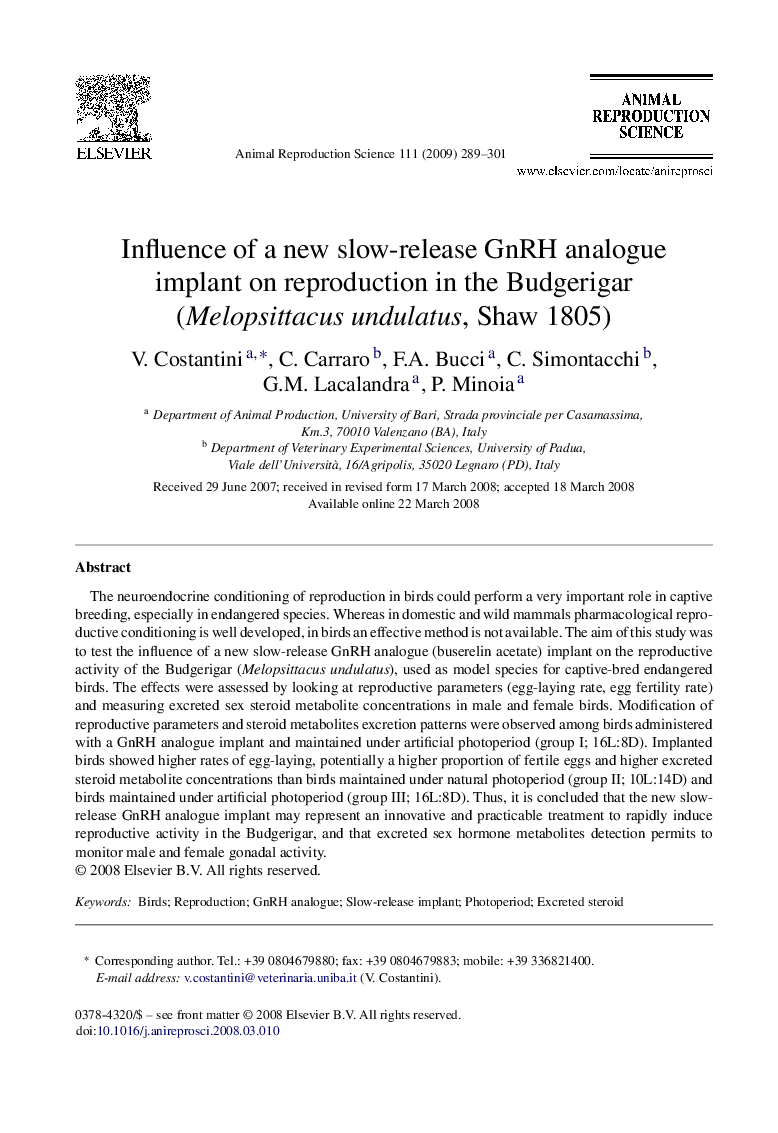| Article ID | Journal | Published Year | Pages | File Type |
|---|---|---|---|---|
| 2073953 | Animal Reproduction Science | 2009 | 13 Pages |
The neuroendocrine conditioning of reproduction in birds could perform a very important role in captive breeding, especially in endangered species. Whereas in domestic and wild mammals pharmacological reproductive conditioning is well developed, in birds an effective method is not available. The aim of this study was to test the influence of a new slow-release GnRH analogue (buserelin acetate) implant on the reproductive activity of the Budgerigar (Melopsittacus undulatus), used as model species for captive-bred endangered birds. The effects were assessed by looking at reproductive parameters (egg-laying rate, egg fertility rate) and measuring excreted sex steroid metabolite concentrations in male and female birds. Modification of reproductive parameters and steroid metabolites excretion patterns were observed among birds administered with a GnRH analogue implant and maintained under artificial photoperiod (group I; 16L:8D). Implanted birds showed higher rates of egg-laying, potentially a higher proportion of fertile eggs and higher excreted steroid metabolite concentrations than birds maintained under natural photoperiod (group II; 10L:14D) and birds maintained under artificial photoperiod (group III; 16L:8D). Thus, it is concluded that the new slow-release GnRH analogue implant may represent an innovative and practicable treatment to rapidly induce reproductive activity in the Budgerigar, and that excreted sex hormone metabolites detection permits to monitor male and female gonadal activity.
